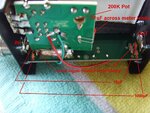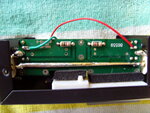doug08
Junior Member level 3
I have one of these laying around:
Workman 104 VHF/UHF SWR/Watt Meter
It was designed for 120mhz - 500mhz. I'd like to lower the frequency range to 80 - 450mhz. The SWR portion does not work under the 120mhz bottom of the range. I cannot set the meter.
Any ideas how? Thanks.
Workman 104 VHF/UHF SWR/Watt Meter
It was designed for 120mhz - 500mhz. I'd like to lower the frequency range to 80 - 450mhz. The SWR portion does not work under the 120mhz bottom of the range. I cannot set the meter.
Any ideas how? Thanks.

